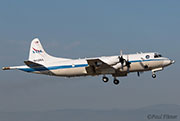The National Aeronautics and Space Administration (NASA) is conducted a month long campaign of air monitoring in the Colorado Front Range area under the name of DISCOVER-AQ (Deriving Information on Surface Conditions from Column and Vertically Resolved Observations Relevant to Air Quality).
This area often experiences ozone levels in the summer that exceed the US national health standards, which are caused by air pollution factors as diverse as power generation, agriculture, transportation, oil and gas extraction, wildfires and population concentrations.
This is the fourth and final area to be extensively monitored, the others being the Baltimore and Washington area, the San Joaquin Valley in California and Houston, Texas.
In the study of Colorado, NASA are joined by the National Science Foundation (NSF) in conjunction with the National Center for Atmospheric Research (NCAR) based in Colorado, plus local universities on strategically placed ground sites, to gain a three-dimensional view of the air pollution.
The study is an attempt to improve the capability of future satellites to monitor air quality worldwide. This is done with the NASA P-3B flying at lower altitudes between 1,000-2,000 feet above ground level (AGL), the NASA Beech 200 flying at 27,000 feet AGL and the NCAR EC-130Q flying at altitudes in between.
A NASA HU-25A (Falcon 20) also joined the group of aircraft assisting in the higher altitude measurements.
At times the P-3B will spiral down over a ground monitoring station so that the ground observers will be able to obtain data at many levels.
Additionally, the NCAR EC-130Q aircraft is also performing a study alongside this called the Front Range Air Pollution and Photochemistry Experiment (FRAPPE).
The series of tests will conclude one of the most comprehensive studies of ozone ever conducted, and will provide a better understanding of how the various pollution levels connect to each other, which will allow satellites in the future to make these kind of measurements at any point in the world to better understand the cause and effects of ozone pollution.
All the aircraft operated out of Rocky Mountain Metro Airport.
Subscribe to receive updates via: e-mail list | Facebook | Instragram | Twitter
[photo/serial list]









































